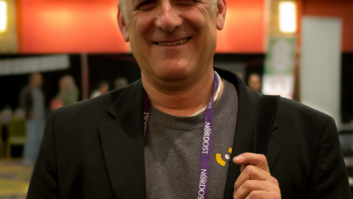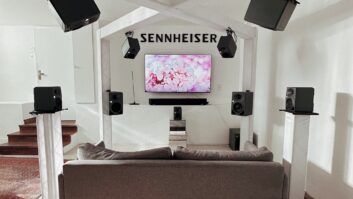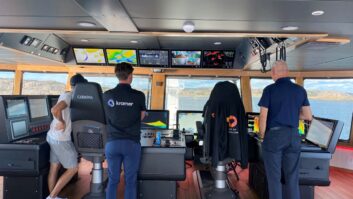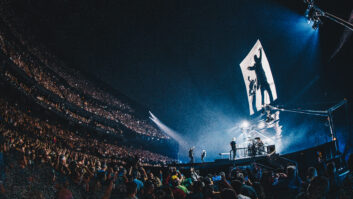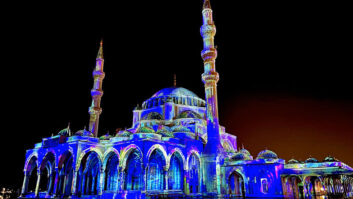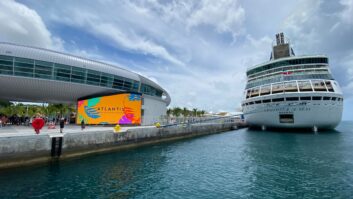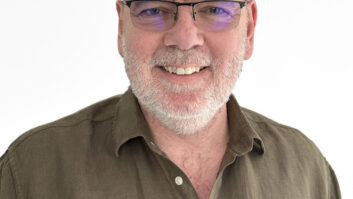The largest passenger liner to be built in Italy, Carnival Dream is packed full of cutting-edge technology, especially when it comes to the on-board leisure and entertainment facilities. Mike Clark reports.
HMS, a leader in system integration in the marine industry, recently added another prestigious project to its portfolio, with the consignment of Carnival Dream, Carnival Cruise Lines’ (CCL) new flagship.
It was built at a cost of around $860 million at Fincantieri shipyards in Monfalcone, Italy, from where it set sail in September on its inaugural cruise before crossing the Atlantic (its home port will be Port Canaveral, Florida). The 130,000-tonne vessel is the largest passenger liner built in Italy, with a normal cruise capacity of 3,646 in accommodation.
Among the countless leisure and entertainment facilities spread over its 13 passenger decks, the ship’s Encore! main lounge, which seats almost 2,000 people, is a concentration of cutting-edge technology.
HMS Italia’s technical manager Omar Hendry explains the specialist work involved in projects of this type – which encompassed rigging, broadcasting, a video edit room and an outdoor LED video wall.
“On a project of this type, our work lasts for around 18 months, from planning, to realisation. First, the equipment list is drawn up by the owner’s consultants, Nautilus Entertainment Design (NED). This is checked and any products no longer manufactured are replaced with the latest equivalents. This is then completed with HMS custom material (junction boxes, switchboards, etc).”
NED president Jim Tetlow explains: “As with any of the Carnival projects, we designed all the entertainment systems, and were responsible for commissioning. NED staff on the project were led by project manager Mike Lindauer.”
Lindauer says: “Our work included initial concept designs, as well as fully detailed system design packages. We were also tasked with the design of a new broadcast system edit control room for the AV department.”
Preparation
HMS prepared specific diagrams and designs: one-line diagrams for cable runs, showing where equipment and racks are effectively positioned and integrating them with the ship’s fittings; block diagrams of individual systems (audio, video, etc), and wiring designs for racks and panels, all based on NED’s designs showing the functions of all the systems in any given area.
Hendry continues: “In the three months prior to a ship’s consignment, the technicians go onboard and install the racks and equipment. Then, during the 12-month warranty period we’re responsible for taking care of all the systems installed.”
Going into detail about the theatre’s technology, he says: “As well as the Yamaha PM5D digital console, and its rack version – the DSP5D – which doubles its power, an interesting aspect is the all-Clair Brothers sound reinforcement system.”
To ensure optimum sound coverage in the three-deck theatre, i-Series loudspeakers systems were chosen. The main FOH system comprises two hangs, each with eight i208 full-range line-array loudspeakers integrated into the stage columns, plus four CS18-II subs below the stage.
This is reinforced by four R3T-90H and four IS218 subwoofers installed on the catwalk, to ensure uniform, high-quality sound coverage in the stalls. To provide intelligibility and well-controlled directivity of the sound, the balcony seating area is covered by seven R3T-90V, 10 R2T-90V full-range speakers and seven CS18-II sub low frequency speakers mounted under the balconies, on two distinct delay lines. The set-up is completed by 27 passive FF2-H speakers, distributed under-balcony throughout the venue.
Completing the setup
All power is via QSC CX and PowerLight 3 series amps, and control and processing are courtesy of two Dolby Lake and eight Symnet 8×8 DSP units. Shows are mixed on the PM5D, configured with 112 input/output channels and dual engine in redundancy configuration, connected via a fibre link with two ALESIS HD-24 multitrack recorders.
Clair Brothers president Barry Clair explains that Carnival Dream was by no means a European first for his firm’s systems integration division: “We’ve designed or installed numerous new-builds and refits in France and Finland.”
As well as with Carnival Cruise Lines and NED, Clair Brothers has a long-standing relationship with HMS, as Clair explains: “We’ve known each other for over 14 years, have worked on many projects together and, as of September 2009, HMS Italy has been appointed official Clair Brothers distributor for Italy under the direction of Antonello Gazzarata.”
Lighting up
As far as lighting is concerned, Hendry opines: “Shipboard rigs’ features are hard to find even in large land installations. For example, no fewer than 12 DMX universes are used to control the Encore! setup via Ethernet and protocols such as Pathway and ETC Net. The rigging and relative control software is also up to the same high standard.”
A grandMA-Lite in the control booth operates the shows, programmed on a full-size desk in the network at a production desk set up in the lower-level audience seating. Control is completed by a dedicated MA PC in the network, for redundant backup locally, as well as the Lite.
CCL’s entertainment technical projects manager Preston L Bircher enthuses: “The grandMA is amazing as it’s designed to be completely flexible – many of the effect cues are easier and faster to write than on other desks. Also, the Move In Black command is much more efficient in presetting automated fixtures for the next position/cue than most other desks used in the past. The other feature is that all MA products on the network backup the shows as they’re being programmed, reducing the possibility of lost work.”
For the three main-stage shows and two smaller shows, the theatre is automated via linear SMPTE code, sent to all desks and computers in the theatre for 99% automation, including the grandMA.
Carnival began switching its ships to grandMA control in 2004, changing the consoles as they change the shows. This was done to maintain uniformity, as technicians often have to be flown into a port-of-call to run a show – and they have to step-in cold and run the desk.
The Encore!’s moving-light package consists of 16 Vari*Lite VL3500 spots, 43 VL2500 spots, 27 VL2500 wash and six Martin MAC 250 Krypton wash fixtures. The ETC conventionals are almost all equipped with automated colour changers.
Theatre visuals are equally high impact with three video projectors. The main (centre) projector is a Christie Roadster S+16K with two Christie Digital DS+6K side screens.
Regarding working on a project of this scale, Hendry concludes: “We’ve a well-proven relationship with Fincantieri and Carnival, so there aren’t usually any problems, but we’re constantly under pressure to respect deadlines and, while working on Carnival Dream, HMS staff were also involved in other projects: Costa Luminosa and Pacifica, Seabourn Odissey, Silversea Spirit, Grimaldi Cruise Europa and Costa Deliziosa.”
